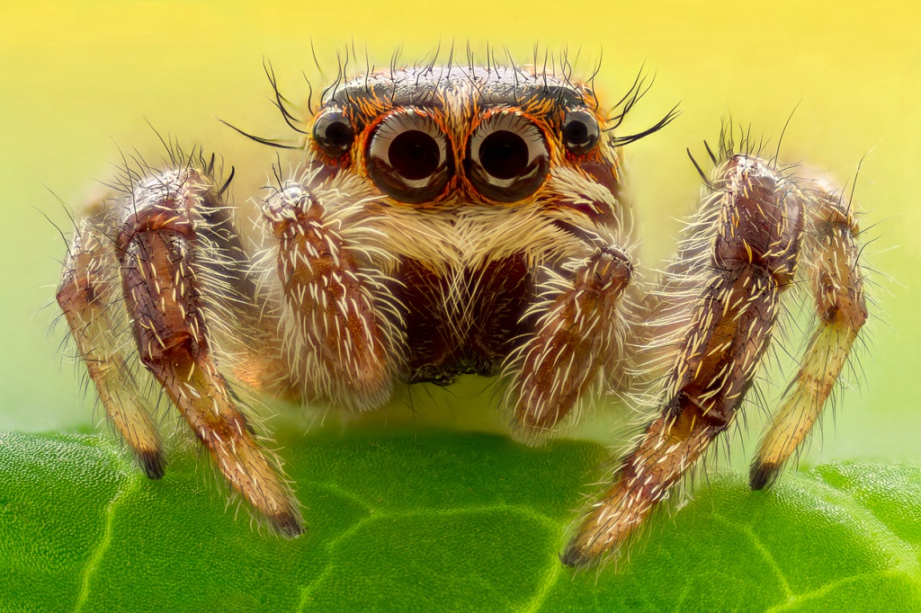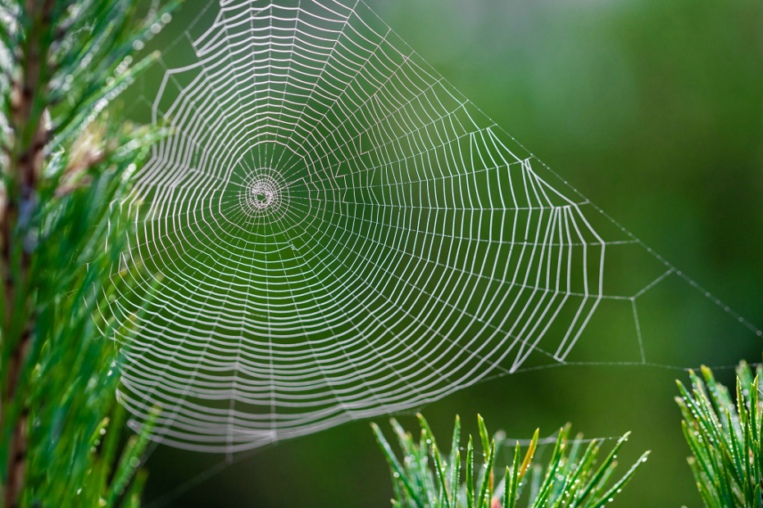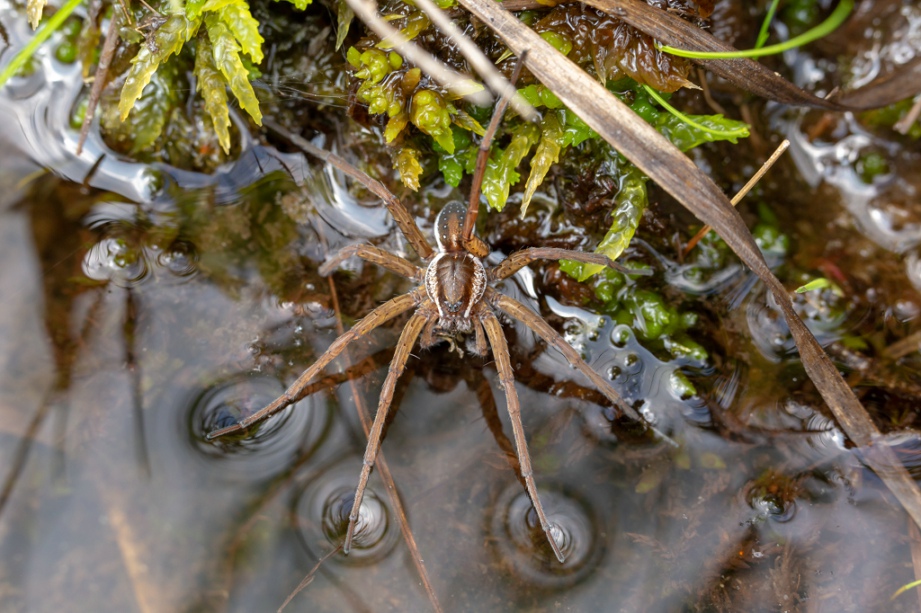There are more than 45,000 identified species of spiders. They have bodies that look very different from insects. Instead of three parts – a head, a thorax, and an abdomen, they only have two. Spiders have a head, called a “cephalothorax,” and an abdomen.
Spiders also have many eyes to help them find and capture food. Most spiders have eight eyes, and they can be arranged in different ways depending on how they hunt. Some spiders only have six eyes. Many pairs of eyes arranged around their cephalothorax allows them to see their food and to be sure they don’t become food themselves.


